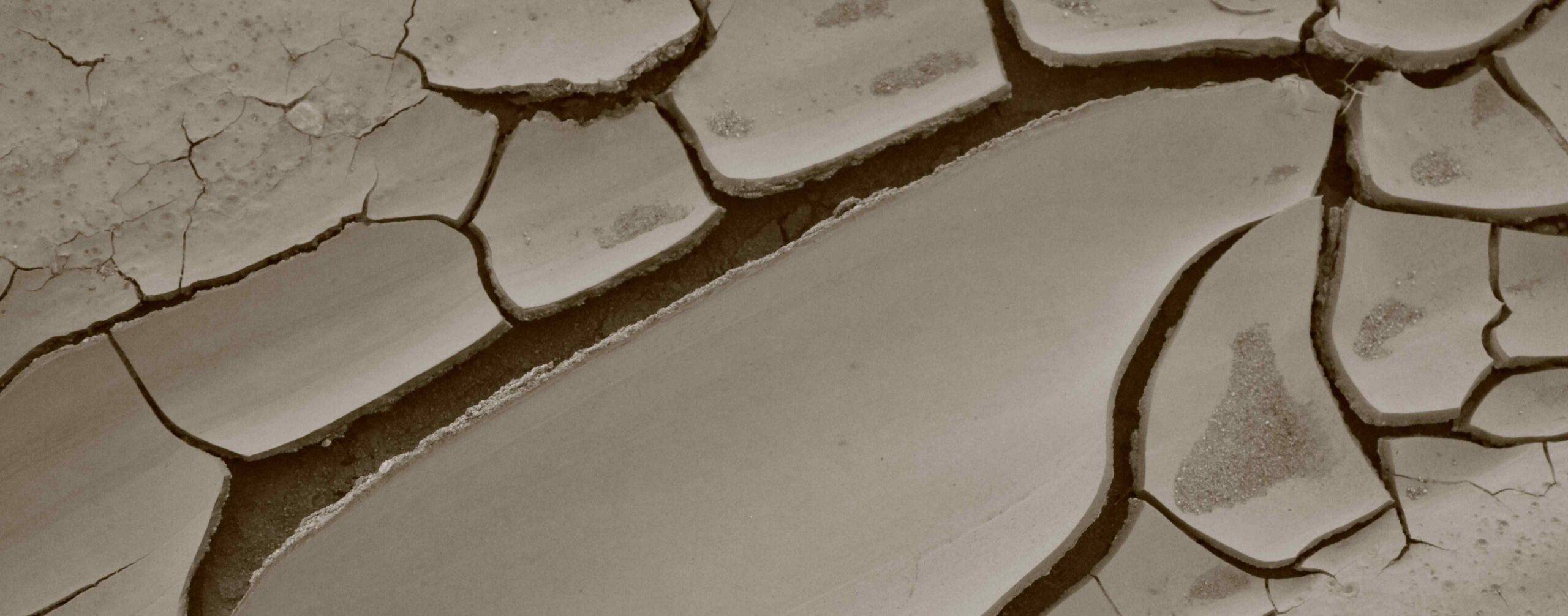Most people have heard the term silt, even if they are not quite sure what silt is. These days it’s often associated with rivers clogging up and widespread flooding. Certainly recent floods in the UK have been blamed in part on build ups of silt. But this is due to a reduction in clearance management practice which stems from government spending priorities.
Build ups in silt levels have been attributed with raising the water levels in many southern river systems, making them more prone to flood in the event of heavy rainfall.
Silt is actually a granular material, smaller than sand, but larger than clays. It is typically quartz and feldspar in its origins. Silt is typically a result of weathering, where sand sized particles of quartz are broken, into ever smaller particle sizes, along weaknesses in their chemical lattice structure.
When silt is dry, it feels a bit like a powder, almost flour like, hence its other name, “rock flour”. When it gets it wet, it becomes slippery, almost greasy to touch. Much of the silt deposits on earth are actually as a result of glacial grinding, but silt can form from chemical weathering as well as physical.

Silt particles are pretty small, somewhere around 0.0039mm up to but less than 0.075mm. Roughly 1/3 of the thickness of a human hair. Keep in mind that this is still larger than clays. The size ranges of silt mean they tend to overlap, and this is how the particles form cohesive profiles, this is unlike clays, which are plate like, and from through electrostatic force.
What makes silt somewhat unique is that each silt particle is approximately the same size in all dimensions.
Silt particles are small enough for transportation by either liquid, as in the case of rivers, or by being blown by winds. Silt is known to be responsible for refreshing the nutrient quality of soils along the banks of the great river Nile.
Recent studies have also implicated the degrading of silt levels in parts of the USA. This due to the implementation of man made water control systems, which have impacted both diversity and future security. Silt deposits have been created through the destruction of vital wetlands and barrier islands.
Growing in silty soil
So, now that we know a bit about the stuff, what’s it like as a growing medium, how can we use it, what are its characters?
Silt can really help water retention. Where we have soils that tend to drain and over dry, adding some silt is often a good idea. It can reduce the need to water every day when we balance the ratio of clays with enough aerating material such as sand.
Just as we learn silt can hold water, adding too much silt can result in any growing soil remaining wet for too long. So careful attention should be paid to monitor drying times, adjusting watering schedules to best fit.
Silt and nitrogen leaching
As waterlogged / flooded soils are the number one cause of nitrogen leaching into our water supply, be sure to monitor the moisture levels and temperature of silt based soils. These factors will affect how you need to manage nitrogen inputs and reduce the cost through efficient application.
Nitrogen losses occur most dominant in soils that remain waterlogged for a number of days and where temperatures are also higher, problems are worse. We will go into more details about managing soil Nitrogen in later blog posts, and so no doubt you see more of this topic as we strive for best practice nutrient use.
So what can we do if we have large volumes of silt in our soils?
Adding silt to soil
Well we can add chunkier materials. Sand, for example. Whenever we amend silt based soils, we should always be sure to dig a little bit more than or around a depth of 1ft before adding extras.
Silt can have a tendency towards compaction. Compaction is where the soil system collapses in on itself, and this drives out essential air pockets, in turn it can also trap pockets of water, which then without oxygen, begin to switch state into a being of anaerobic favor. This can be terminal for most of our plants.
As oxygen is a crucial growth element required by plants, so it is that healthy rates of oxygen in soil are critical. We must strive to have a soil that has a good balance of water retention, but not to the extent that it drives out the oxygen.
Many of the organisms we have been discussing, like soil fungus and bacteria that support our plants growth and development, all need oxygen to function in symbiosis with our plants.
When levels of available oxygen in the soil system drop below a critical marker (this being 6 parts per million of DO2 – Dissolved Oxygen), the system of soil itself changes. Which tends to be less hospitable with regards to us and our plants.
Many of the microbes who were once friends, now in desperation, begin to feed on our plants in the hope of out living the drop in Oxygen levels, whilst many other microbes that prefer anaerobic states begin to flourish in the absence of Oxygen. These characters typically come packaged with all the plant pathogens nature has in the locker.
Keeping our soils from over compacting is a primary concern. BUT it’s not just the ratio of soil particles that lean our soils towards compaction, there are many causes and opportunities for unwitting growers to induce compaction.
As such we will treat the topic of soil compaction on its own merit in a later blog post. Keep in touch by signing up to our newsletter.
Summing up on silt
The uniform particle size of silt allows us to use it to adjust water loss in our soils. The nature of its size regularity and its overlapping design do however, make it a prime candidate for high compaction.
Now that we understand more about silt, we should be better prepared to spot any possible hazard, or know better when and where its use case is correctly applied.
On its own, silt has many plant friends, especially among those water loving varieties – these can be grasses, but also many flowers and vines.
Silt can be used to help retain moisture and prevent over drying, which can lead to plant damage. Equally where soils need to be improved in terms of water drainage, understanding how much silt we have can help us determine how much and what type of drainage material we might need to add. Knowing this might also allow us to predict future hazards and provide integrated management plans to mitigate nutrient leaching through denitrification and compaction risk.
Where we have higher levels of silt, we may need to look to boost both Oxygen carrying elements and improve soil tilth.
Better products for silt soils
We do this with regular inputs, of humates, such as Bio Balance Media and Bio Balance Foliar. We can also use Bio-Hydrate with our water / nutrient inputs, either as a soil watering solution, or as a plant leaf spray, this will increase water efficiency, but more, it contains Salicylic Acid, known to play a positive role in plant stress signaling systems as well as assisting in the reduction of salt accumulation.
Again we should be sure to treat our growing spaces and plants with beneficial microbes, which can be found in Root Better and Bio Media Pro. Where silts have compacted making plant root growth hard work, ultra fine and ultra tough, fungal roots can more readily slip between the layers of silt particles and clays and so on, providing our plants with access to resources they might otherwise never reach alone.
Where silts are at risk from environmental weathering, we can better aggregate them through microbial soil protein release. This anchors the system as a whole, preventing soil erosion and the loss of economy that follows.
Through a deeper understanding of natural plant and fungus symbiosis, we can look to mitigate some of the risks associated with complex soil types like silt, in many instances, without adding extra labor.
If we add the right blend of microbial life at the point of planting, we can boost the types of characters whose presence assists our plants by gently tilling (preparing) the soil profile from within. This maintains the critical structure of soil and thus integrity by converting and returning nutrients as well as providing both plant growth and plant-soil health-promoting benefits through natural secretions of enzymes, organic acids etc.
Adding Root Better and Bio Media Pro provides assurance that we are providing these benefits from day 1 and so we have the widest chance today, to capitalize on the many benefits growing with active biology brings to any and all soil systems, including those higher in silt.
Now that you’ve familiarized yourself with sand and silt, it’s time to get to know clay and the finest grained secrets it has to offer.
Adios
Andy
If you want to find out more about how nitrogen in our water supply affects health, then read this post on the nitrogen runoff troubles of Pretty Prairie village in Kansas.
Images credit
Cover – James W. Teaford
Glacial Milk – Andrew Koro
Silt particles under microscope – Evelyne Delbos, James Hutton Institute.

